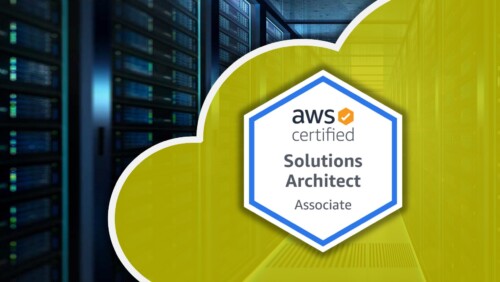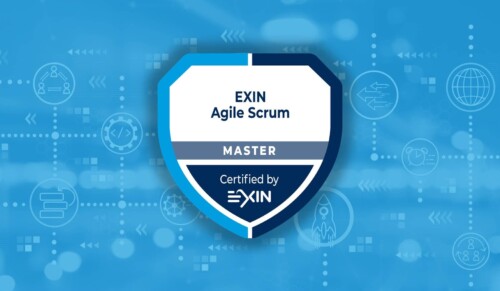Description
Overview
The Apple Certified Assistance Professional (ACSP) certification confirms that you have a thorough understanding of macOS’ essential functionality, as well as the ability to configure vital services, perform basic troubleshooting, and provide critical macOS support to a large number of users. With the ACSP certification, you can establish yourself as a capable professional, get a competitive advantage in a changing job market, and use the power of the Apple brand.
Individuals who have a basic understanding of MacOS core functionality and can configure essential services, diagnose issues, and assist end users with basic MacOS capabilities.
This course prepares students to work as a help desk specialist, technical coordinator, or power user who assists Mac users, maintains networks, or offers Mac technical support.
In today’s job market, this certification gives you an advantage over the competitors. It will enable you to capitalise on the strength of the Apple brand.
How to use macOS 11 tools and resources to troubleshoot macOS 11, macOS 11 features and functionality, including how to find more information
- 11:58:00 Hours
- 12 Months Access
- Presented by highly qualified, industry leading experts
Course Details
- Help desk specialists, technical coordinators, service technicians, or IT professionals who need to support users of macOS systems
- Technical support personnel in businesses that use Macs for general productivity or creative design
- Technical coordinators or power users who manage networks of computers running macOS, such as teachers and technology specialists who manage classroom networks or computer labs
- Resellers, distributors, systems integrators, and consultants who are selling Mac computers
- CompTIA A+ is recommended
- Basic experience navigating macOS
INSTALLATION AND CONFIGURATION
- Overview
- Installation Requirements
- Building Installation Media
- Installing MacOS
- Initial System Configuration
- Configuring Printers
USER ACCOUNTS
- Local User Accounts
- ICloud Accounts
- Special User Accounts
- User Account Security
- Screen Time
DATA MANAGEMENT
- Storage Hardware
- File Systems
- File System Maintenance
- FileVault Disk Encryption
- Archives And Disk Images
- Default File Permissions
- Customizing Permissions
- Special File Permissions
- Aliases And Links
- Hidden Files
- Understanding File Domains
APPLICATIONS AND PROCESSES
- Using the macOS App Store
- Application Security
- Application Preferences
- Quick Look
- Auto Save
- Voice Control And Siri
NETWORKING
- Network Types and Addressing
- Configuring Ethernet Adapters
- Configuring WiFi Adapters
- Network Locations
- File and Folder Sharing
- Apple Remote Desktop
TROUBLESHOOTING AND SUPPORT
- Troubleshooting Applications
- Troubleshooting Peripherals
- Updating MacOS
- The MacOS Boot Process
- Introduction To MacOS Recovery
- Backing Up With Time Machine
- Restoring Files From Time Machine
- Restoring MacOS From Time Machine
Introduction to macOS
- Describe macOS.
- Describe new macOS Big Sur 11 features.
Update, Upgrade, Reinstall macOS
- Describe the differences between a macOS update, upgrade, and reinstallation.
- Describe the macOS Installer.
- Update macOS.
- Upgrade macOS.
- Reinstall macOS.
- Verify system information.
- Troubleshoot a macOS upgrade or reinstallation.
Set Up Your Mac
- Complete initial macOS configuration.
- Adjust common system settings.
- Identify and install a configuration profile.
Use the Command Line
- Describe when the command-line interface is useful.
- Use man (manual) pages to find more information about commands.
- Manipulate files in the command-line interface.
Use macOS Recovery
- Access macOS Recovery utilities.
- Manage Start-up Security Utility.
- Set a firmware password to secure macOS start-up for Intel-based Mac computers.
- Manage Secure Boot and external boot options for Intel-based Mac computers with the T2 chip.
- Reinstall macOS from macOS Recovery.
- Create an external macOS Recovery disk.
Update macOS
- Configure automatic macOS software update settings in Software Update preferences.
- Configure automatic App Store software update settings in App Store preferences.
- Automatically update Apple-sourced software.
- Manually update Apple software.
Manage User Accounts
- Recognize various user account types and user attributes.
- Create and manage user accounts.
- Restrict access for children with Screen Time settings.
- Adjust login and fast user switching settings.
Manage User Home Folders
- Describe user home folders.
- Delete users’ accounts and archive their home folder contents.
- Migrate and restore home folders.
Manage Security and Privacy
- Describe password types and use.
- Manage secrets in Keychain.
- Turn on iCloud Keychain and manage it.
- Manage systemwide security and user privacy.
- Approve System Extensions.
- Approve Legacy system extensions.
- Use Find My.
- Secure your Mac with Activation Lock.
- Lock your screen.
Manage Password Changes
- Change known passwords.
- Reset lost user passwords.
Manage File Systems and Storage
- Recognize systems that macOS supports.
- Manage disks, partitions, and volumes.
- Troubleshoot and repair partition and volume issues.
Manage File Vault
- Describe how File Vault helps protect data.
- Enable File Vault protection.
- Describe how to regain access to a File Vault-protected Mac when all local user account passwords are lost.
Manage Permissions and Sharing
- Describe file ownership and permissions.
- Explore macOS default shared folders.
- Securely manage file and folder access.
Use Hidden Items, Shortcuts, and File Archives
- Navigate to hidden files and folders.
- Examine packages and bundles.
- Manage aliases and links.
- Create and open ZIP archives and disk images.
Manage System Resources
- Explore and understand the macOS file layout.
- Discover common system files, their location, and their purpose.
- Describe System Integrity Protection.
- Manage font resources.
Use Metadata, Siri, and Spotlight
- Describe how macOS stores and uses file metadata.
- Use metadata such as tags and comments to organize your files.
- Use Siri and Spotlight to search for local and internet resources.
Manage Time Machine
- Describe Time Machine.
- Configure Time Machine to back up data.
- Restore files from a Time Machine backup.
Install Apps
- Install apps from the App Store.
- Describe app support and identify security issues.
- Install apps using software packages and the drag-and-drop method.
Manage Files
- Use Launch Services and Quick Look to open files.
- Describe how Launch Services uses the app database.
- Preview files with Quick Look and the Preview pane.
- Work with apps that support Auto Save and Versions.
- Save and open documents saved to iCloud.
- Optimize local storage to reclaim space on the system volume.
Manage and Troubleshoot Apps
- Describe and support app types.
- Install Rosetta.
- Manage app extensions and widgets in Notification Center.
- Monitor and control processes and apps.
- Explore various app troubleshooting techniques.
Manage Basic Network Settings
- Describe Transmission Control Protocol/Internet Protocol (TCP/IP) networking concepts.
- Configure and monitor network settings.
- Connect to a Wi-Fi network.
Manage Advanced Network Settings
- Describe the macOS network configuration architecture.
- Manage multiple network locations and service interfaces.
- Configure advanced network settings.
Troubleshoot Network Issues
- Identify and resolve network configuration issues.
- Verify network configuration with Network preferences.
- Use Terminal to aid in troubleshooting.
Manage Network Services
- Describe how macOS accesses shared network services.
- Configure built-in macOS network apps.
- Browse and access network file services using the Finder.
- Troubleshoot network shared service issues.
Manage Host Sharing and Personal Firewall
- Examine and turn on host-sharing services built into macOS.
- Examine and turn on content caching services built into macOS.
- Use screen-sharing tools to access other network hosts.
- Use AirDrop to share files.
- Secure shared services by configuring the personal firewall.
- Troubleshoot shared service issues.
Manage Printers and Scanners
- Describe technologies that enable macOS to print.
- Configure macOS for printers and multifunction devices.
- Manage and troubleshoot print jobs.
Troubleshoot Start-up and System Issues
- Describe the macOS start-up process.
- Examine the essential files and processes that are required to successfully start up.
- Learn about macOS start-up modes.
- Troubleshoot start-up and login processes.



